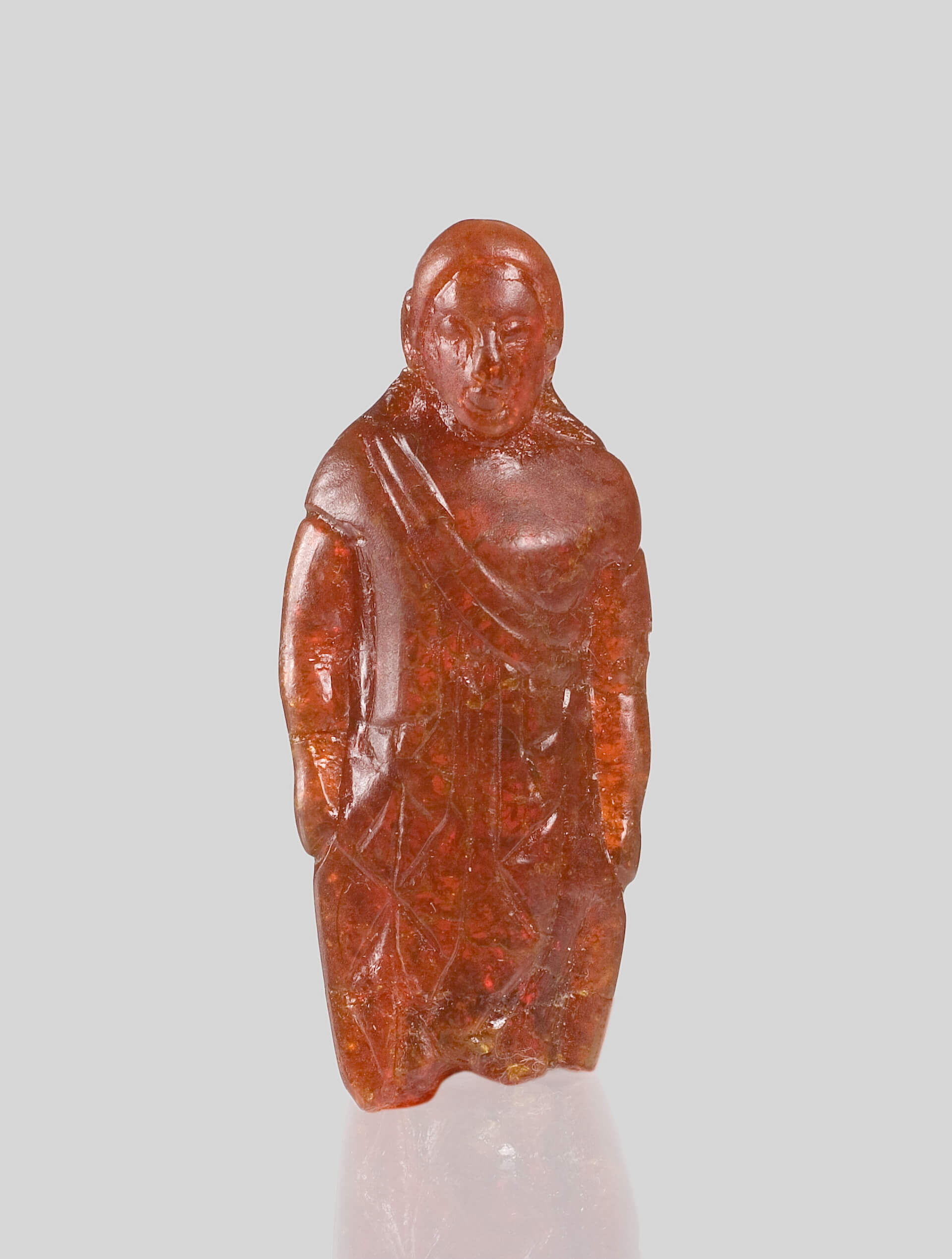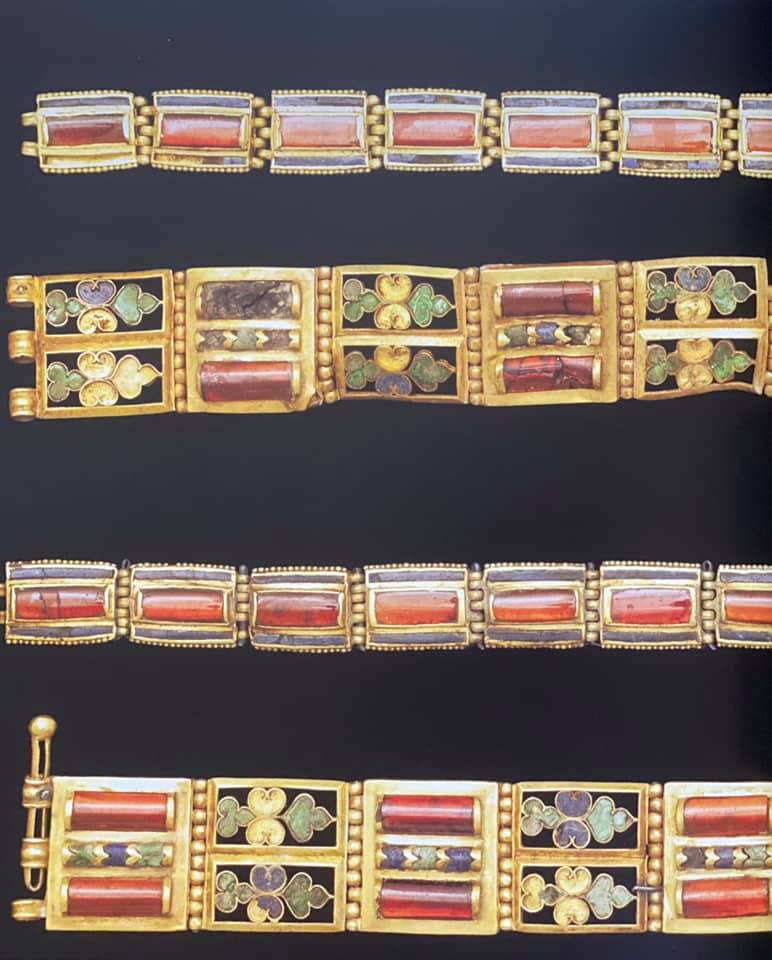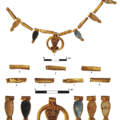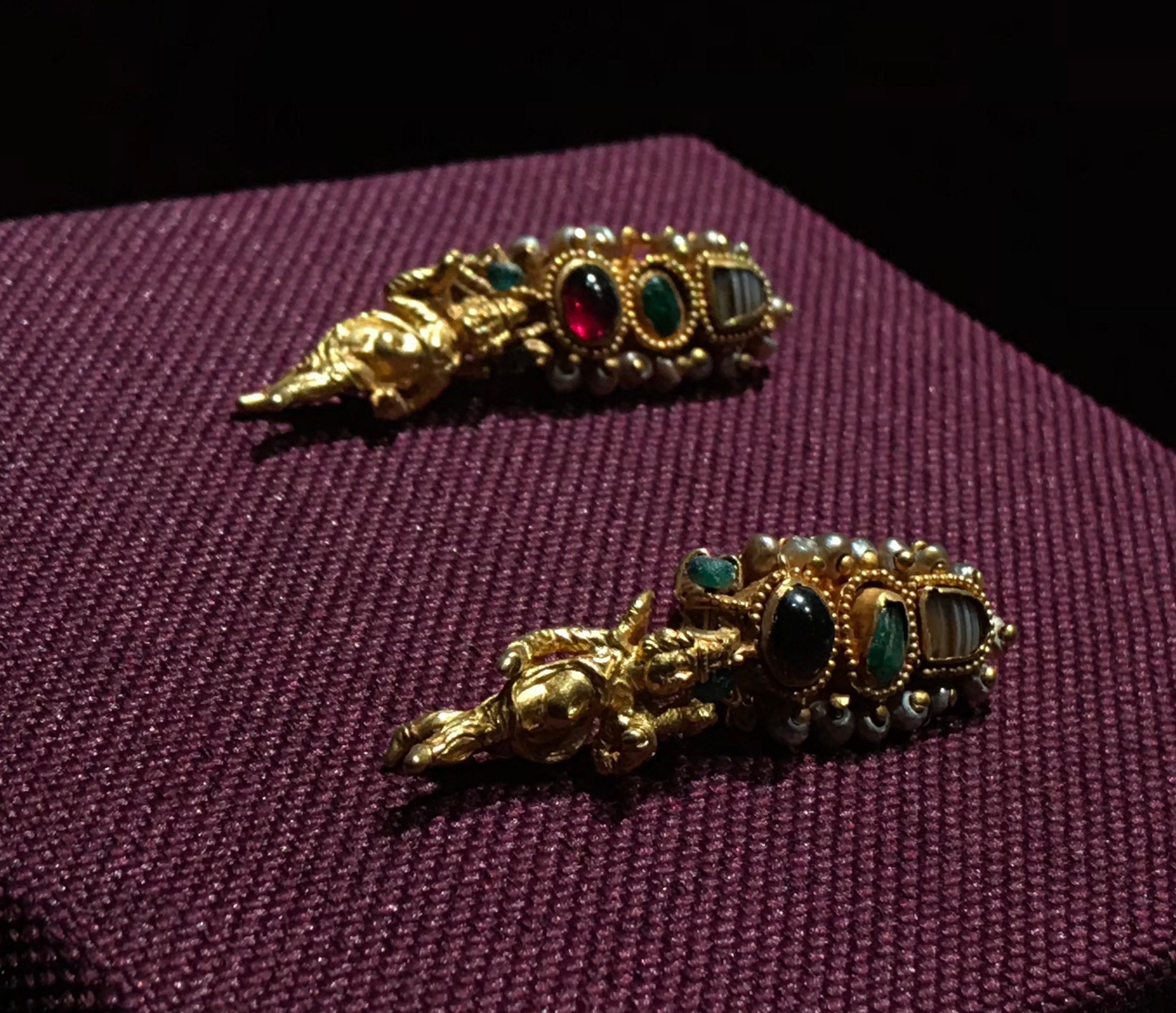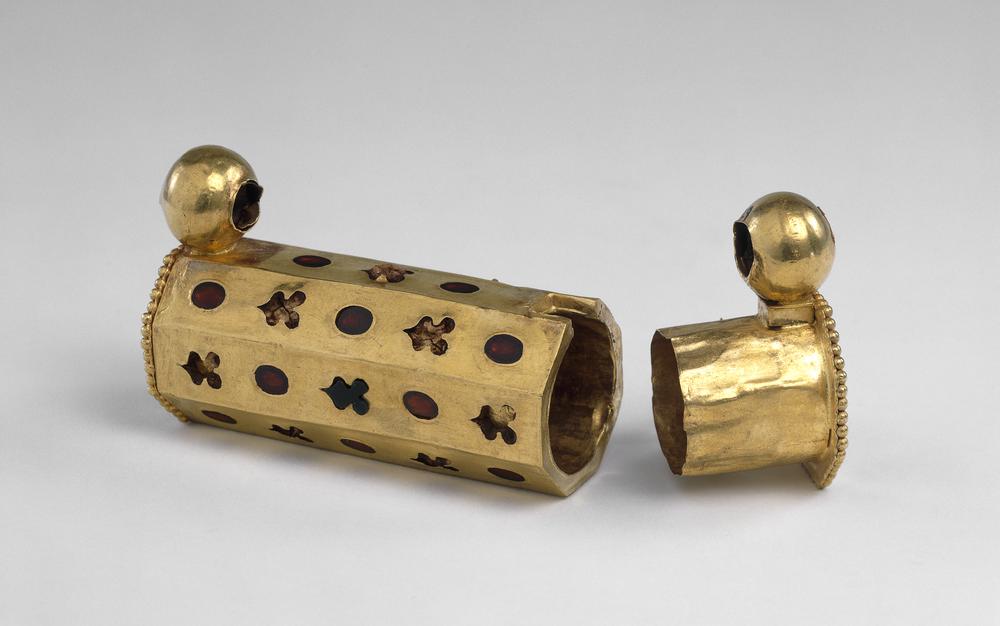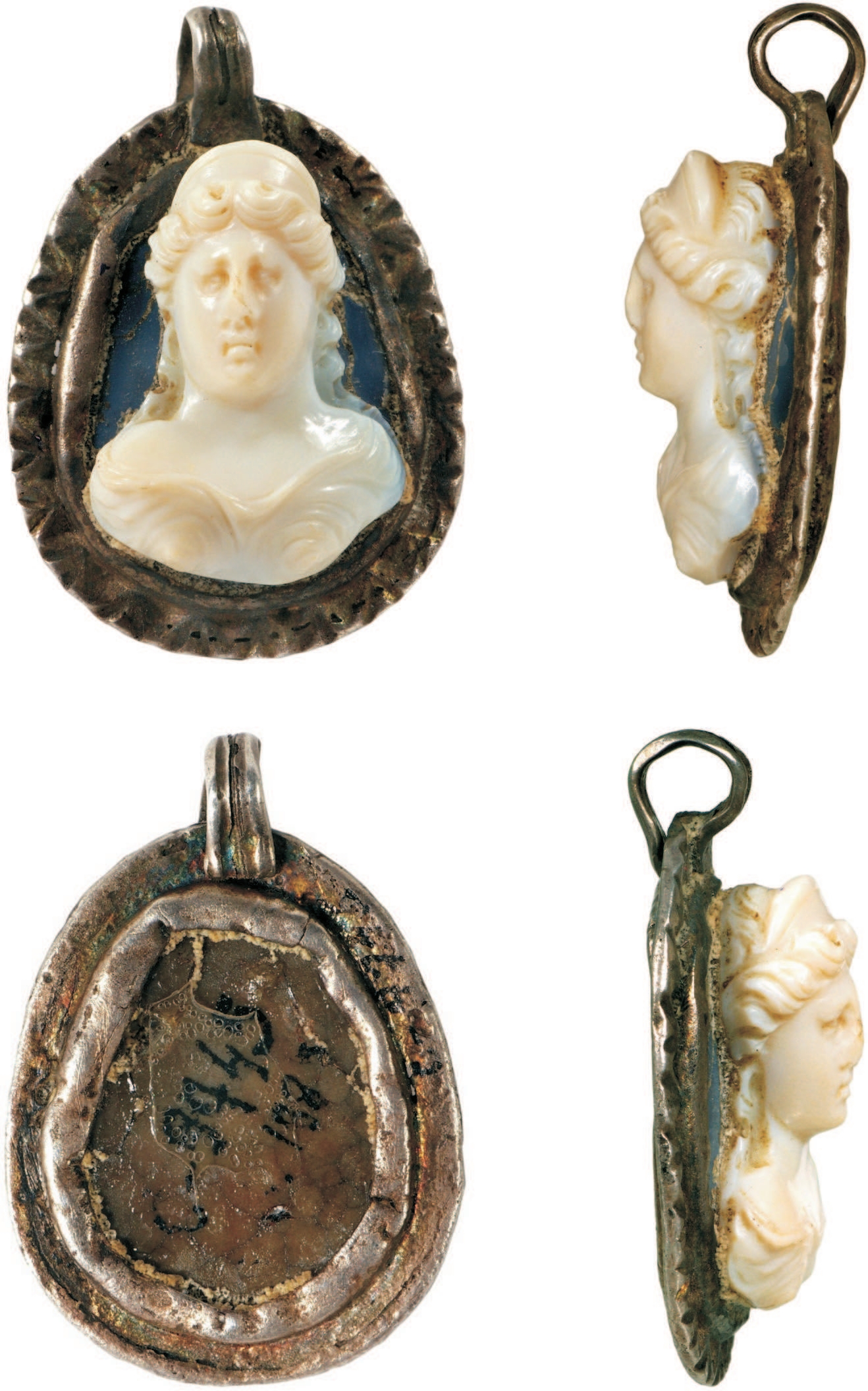
These pieces – rings, earrings, fibulae, pendants, necklaces and bracelets made of gold, silver and semi-precious stones originate mostly from ancient Roman greaves from different sites in Belgrade. Collection of Belgrade City Museum.
source


Viminacium, family tomb. 4th century
“A circular socket made of gold sheet and with the frame decorated with carved palmettes is filled with dark blue glass, and possibly represents a composite part of a necklace resembling the one from Šarkamen, or it may rather be an appliqué. On each lateral socket side there is a smaller perforation, possibly used to connect this jewellery segment with other parts (that did not remain preserved), or to be sewn onto textile as an independent appliqué. Similar appliqués are known from Ohrid, and they belong to the 4th century.” [Bebina Milovanović]
Bebina Milovanović
Nakit i fibule Između funkcionalnosti, estetske vrednosti i statusnog simbola / Jewellery and Brooches: between Functionality, Aesthetic Value and Status Symbols https://www.academia.edu
Pair of earrings, gold, amethyst. Length: 3.5 cm, head diameter: 1.8 cm
Viminacium, Više grobalja, grave G-2615. 3rd century
“Within the socket there is a purple precious stone (amethyst). On the lower head part there is a diagonal trapeze-shaped ribbon with three hooks on which there are three wire pendants with circular sockets made of metal sheets and filled with precious stones. Each pendant ended with a bead (only one remained preserved).” [Bebina Milovanović]

https://javniservis.net


https://kaleidoskop-media.com/vizuelne-umetnosti/Muzej-bez-adrese-55


Ravna, Slog necropolis, grave 134
Homeland Museum Knjaževac, inv. 793
Two gold earrings the pyramidal pendants shaped as a stylized Hercules’ club with a bead at the end. [source]
Literature
- Bebina Milovanović
Nakit i fibule Između funkcionalnosti, estetske vrednosti i statusnog simbola / Jewellery and Brooches: between Functionality, Aesthetic Value and Status Symbols https://www.academia.edu - Bebina Milovanović, Jewelry as a Symbol of Prestige and Power of the Viminacium Population https://www.academia.edu
- https://www.academia.edu/21516542/Earrings_Symbol_of_Femininity_of_Roman_Ladies_of_Viminacium
- Dragana Spasic-Djuric, Nakit od gagata iz Viminaciuma i Marguma/Jet Jewelry from Viminacium and Margum
https://www.academia.edu - https://www.academia.edu/127044847/Gold_Finger_ring_in_the_Form_of_an_Oil_Lamp_Unearthed_at_Viminacium_s_Hypogeum
- https://www.academia.edu/95211712/Woman_Wife_Mother_Everyday_life_of_female_residents_in_Viminacium

A well-preserved carnelian ring, of an unusual shape, discovered during an archaeological excavation in 1973, in the Kalemegdan Park, near the Cvijeta Zuzorić Pavilion. 4th century, Roman time Serbia

Length 7.5 cm
Homeland Museum Knjaževac, inv. 160
https://muzejknjazevac.org.rs/en/facilities/timacum-minus/
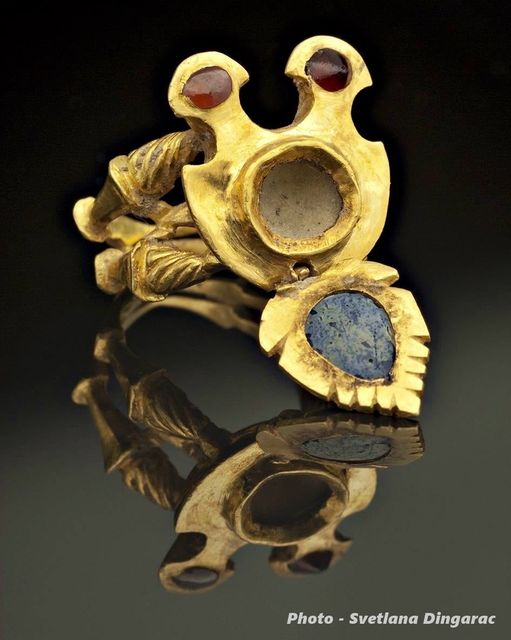 3rd-4th century ring in the shape of an oil lamp (lucerna) from Viminacium. It’s made of gold with garnets, and a blue glass paste in the movable lid. source https://www.academia.edu/127044847/Gold_Finger_ring_in_the_Form_of_an_Oil_Lamp_Unearthed_at_Viminacium_s_Hypogeum | https://www.instagram.com/p/DHF4UEnqMHa/ https://metkovic-news.com/news/otvorena-izlozba-rimske-zlatne-nausnice/ |
 Bejeweled Roman helmet from Berkasovo. It’s made of gilded iron with semiprecious stones and glass paste; 4th century. source |  The Helmet has Greek inscriptions on the edges. Collection of Museum of Vojvodina in Novi Sad source |
 Roman silver scepter with figures of deities, 3rd century AD, excavated at remains of Roman town at Dubravica / Margum archaeological site, vicinity of Požarevac, eastern Serbia. Collection of National Museum of Serbia in Belgrade source | 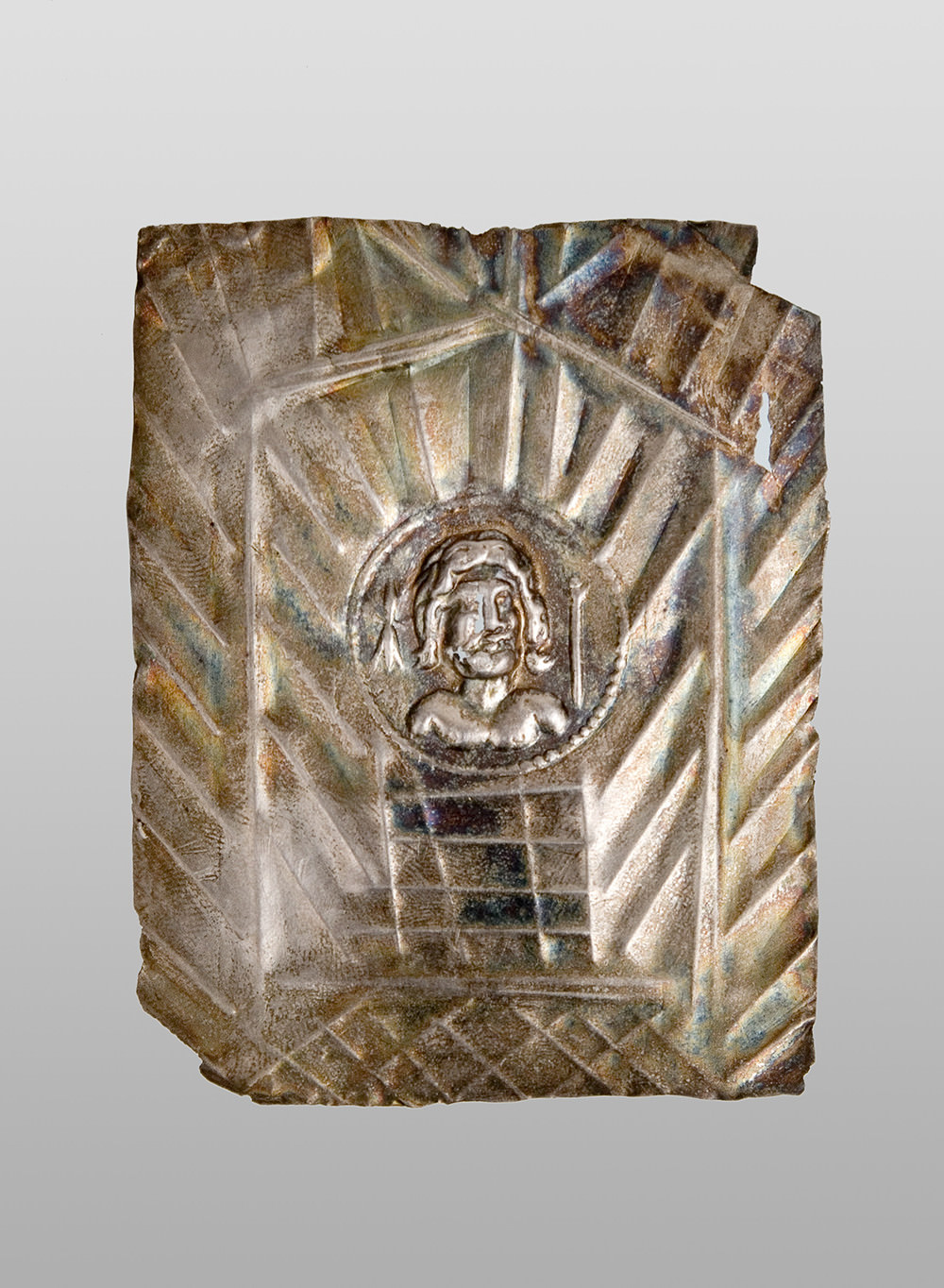 Emblem with a representation of Jupiter, second half of the 1st century, silver, Tekija (Transdierna) http://www.narodnimuzej.rs/antika/zbirka-rimskog-carskog-perioda/ |
 Roman oil lamp (lucerna) made of bronze in the shape of the Griffin mythical beast with Christian motifs, 4th/5th century, found in Serbia, Panjevac near Ćuprija. On the head of the griffin there is a dove standing on the cross, and “Chi Rho”. Collection of National Museum of Serbia in Belgrade source | 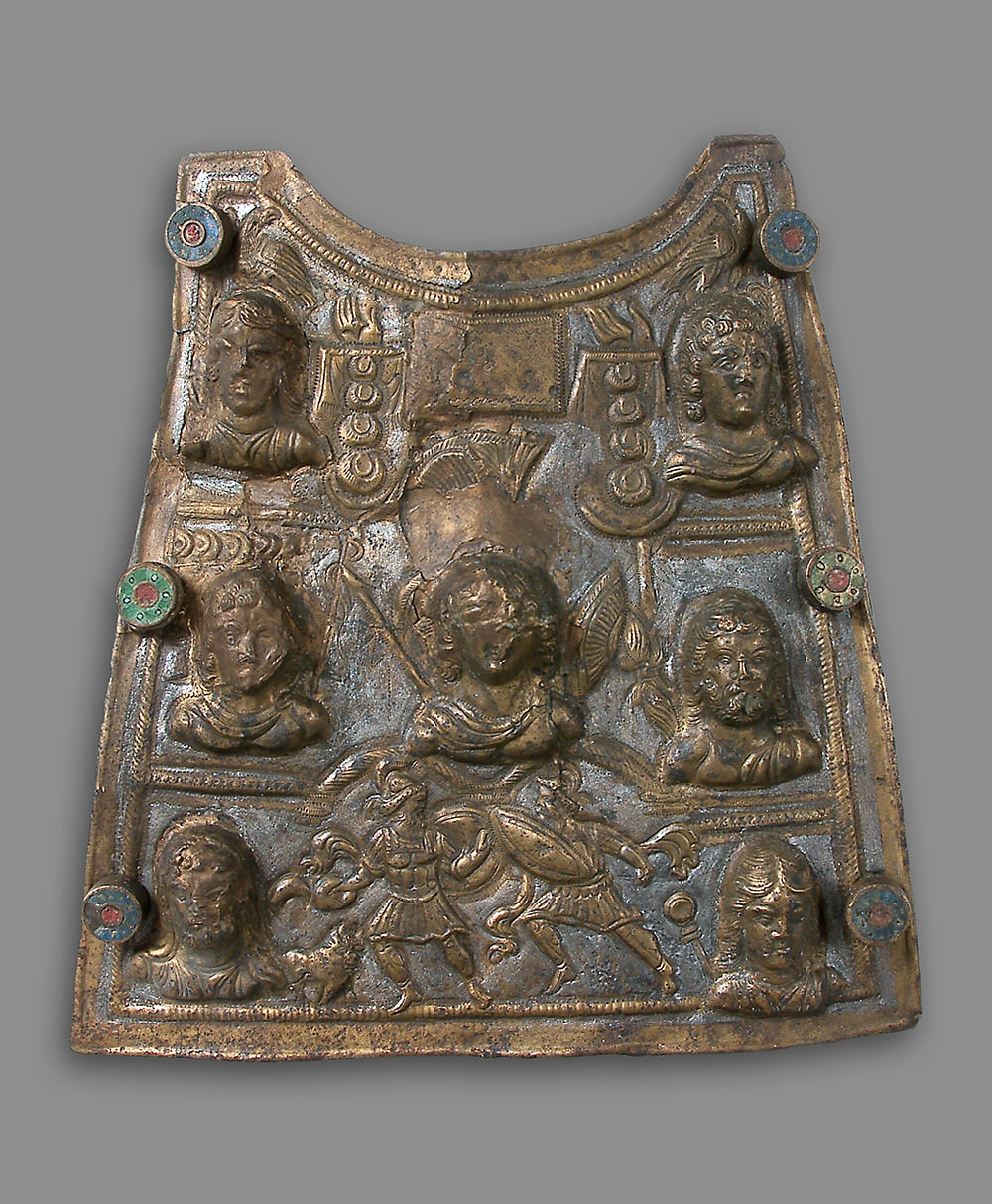 Pectoral, 3rd century, brass and enamel, Ritopek (Castra Tricornia) http://www.narodnimuzej.rs/antika/zbirka-rimskog-carskog-perioda/ |
 Portrait of Roman Emperor Constantine the Great found in ancient Naissus, present-day Niš; 4th century. This head was part of larger statue of the emperor which was made of gilded bronze. Dimensions – height 24 cm. Collection of National Museum of Serbia in Belgrade. source |



